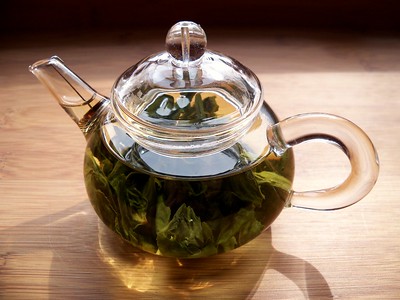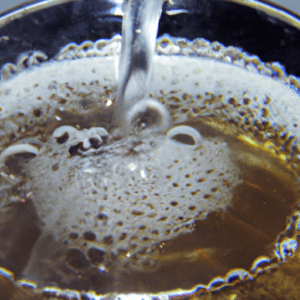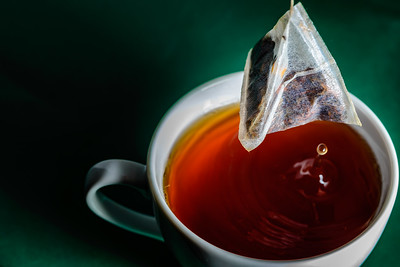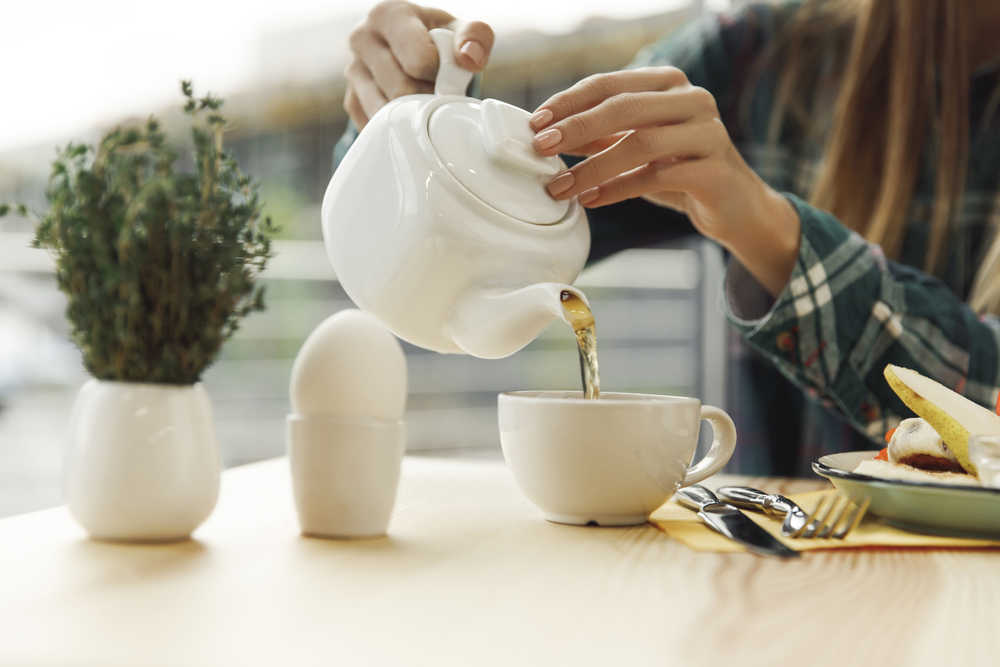Having a pot of tea is a wonderful way to present brewing tea to a group of guests or simply keep your many cups of tea warm. Whether you are sharing the tea or keeping it all to yourself, a teapot is a perfect companion for your warm pick-me-ups or relaxing breaks.
Do you love having multiple cups of tea a day? Or do you enjoy the occasional tea? Tea and biscuits go together perfectly, especially if you know how to brew your drink correctly. (Don’t worry – we will explain everything in this article). Tea drinking and making is a popular activity around the globe. We’ll cover some different ways to make tea according to cultures worldwide.
Knowing how to use a teapot will significantly enhance your tea-making experience. When it comes to selecting the right teapot, it comes down to personal preference. Your taste in tea will directly affect your teapot choice.
This article will explain how to use different teapots according to your preference for tea bags or loose-leaf tea. Of course, tea-making can become an art! But in reality, the process is quite straightforward.
Choosing the Right Teapot
To make tea the right way, you need to find the perfect teapot. And this all depends on the type of tea you make.
English
The most popular choices for a teapot in England are glass, porcelain, and ceramic teapots. You can find so many different styles that you won’t be at a loss for a lovely design.
Non-porous materials are less likely to affect the taste of the tea. Ceramic teapots are a favourite of tea drinkers because they retain heat very well and usually have handles built-in that are cool to the touch.

Japanese
In Japanese culture, popular choices for the teapot include the cast-iron teapot. This is called a Tetsubin, which translates as ‘iron pot’. And it’s a type of teapot that can still be used even when (or if) rust appears! Its special design and type of material mean that the rust is not toxic and can actually add flavour to the hot water. Some people buy rusted pots specifically for extra flavour.
American
Alternatively, in American culture, the popular choice is stainless steel or glass for the modern look. Oolongs and green tea are best made in glass teapots. Since glass teapots are transparent, they are fantastic for blooming or floral tea, as you will see the tea leaves unfurl as the tea brews. Stainless steel is suitable for you if you prefer to put the teapot in a dishwasher.
Chinese
In Chinese culture, you may find clay teapots or, more specifically, ‘purple clay’ teapots called Zisha from the Yixing area of China. You might see these teapots called ‘Yixing’ pottery. Clay has benefits that enhance the flavour of the tea, such as a porous surface that is designed to hold and build up the tea oils over time which then contribute to the flavour over time.
Experts recommend choosing a purple clay teapot if you prefer to brew green tea, white tea and oolong tea. Make sure you don’t mix teas unless they are from the same family. Black tea is very strong and should have its own pot, or it will overpower the lighter teas the next time they are put into the teapot.
How to Recognise if Your Clay Teapot Is Authentic:
- There may be tiny white or black spots
- There may be tiny holes or bumps on parts of the surface
Top Tips for Curating the Perfect Pot of Tea
Whichever pot you decide to buy, this guide will help you how to make tea in a teapot the right way, with bags or loose-leaf tea. Let’s get started with the steps!
Step 1: Getting to the Correct Water Temperature

You should always use cold water to brew tea and get the best flavour. Your tap water will be the most suitable option, even better if you have a filter installed. You may be tempted to use a boiling water tap, but this will bruise most teas and draw out tannic acids. For example, boiling water easily damages green teas, making the tea bitter.
You should heat up or boil water to the exact temperature you need for the best results and the perfect cup of tea. Check a steeping tea chart to ensure you have the correct temperature for your choice of tea leaves or bags. Some tea types require boiling, but other teas need only warm water.
You should never boil or heat the water in the microwave. Doing this will result in an unevenly heated water temperature. Also, you shouldn’t try to make your tea in a kettle, as it is not designed for this, though some people are tempted. Only use the kettle to achieve the boiling point.
Pro Tip: A thermometer can be useful here. If you overheat the water and then let it cool to the desired temperature, you will lose some oxygen, so the boiled water flavour can be affected.
If in doubt, check the back of your tea package, as good quality tea will suggest the correct temperature.
Step 2: Brew Tea Leaves Into the Teapot
Pour the water at the desired temperature into your teapot. Now, after you add the hot water, you will add the tea leaves or bags into the teapot with the water. However, there are a few different ways to do it, depending on what you are using.
External Strainer
If you are using herbal tea leaves, you should use the external tea strainer method. These tea leaves will need to be steeped for five minutes or longer. If you are using an external strainer, you should steep the tea for the recommended type according to the tea package or a steeping chart. Then, slowly pour the tea into your cup.
Try to avoid pouring loose leaves into your cup when you pour the tea. If you are unsure how many tea leaves you should include in your teapot, the general guide is to pour one teaspoon of tea leaves per individual cup. So if you have two cups, you should be pouring two teaspoons into your teapot.
Internal Filter
The internal filter – sometimes called an infuser – is especially useful if you just want to pour the tea directly into the teacups. This method means that you are not holding both a filter and a teapot simultaneously.
The tea strainer will stop the leaves from falling into the tea, preventing tea dust from collating in your cup.
Tea Bag
Using tea bags is an easier option, but only slightly so. After adding hot water, you can place the tea bags directly into the teapot. Be careful not to over-steep the tea, or this will lead to over-extraction, which can leave a bitter taste in the tea.
Tea bags are easy to remove and so can be cleaned up easier. However, loose-leaf tea is recommended if you want the best tea, as they release the best flavours.

Step 3: Taste and Savour
Once you have made your tea, don’t drink it too early! Hot water or boiled water can be dangerous if you drink it too soon. Direct heat can cause burns. Wait for the water temperature to reach a safe level, and then you can sit back and relax whilst you enjoy your wonderfully brewed pot of tea.
Step 4: Cleaning the Teapot
This is an important part of the tea brewing process. The way you clean your teapot will affect how your tea tastes afterwards when made with the same pot.
You should clean your teapot after each use, not just when it looks stained. If your teapot is stained, you may need to soak it overnight.
Cleaning your teapot is easy, but you need to use the right materials, or you could damage your teapot. All you need is vinegar and baking soda. Simply mix these two elements in the teapot with warm water and also in the cup you used. If the teapot needs soaking, rinse this mixture out after a few hours with hot water. You could let it soak overnight. Remember that you should never use harsh products, only natural ones, or you might risk getting a soapy flavour in your teapot.
Use a damp cloth to wipe out the teapot and a narrow bottle brush for the spout. A good rinse will do wonders to ensure that the previous flavours do not affect the next round of tea, especially if you are using a different type.
Brewing the Tea to Perfection
Now you know how to use a teapot and make a great cup of tea, with recommended tips to help you. Enjoy your teapot brewing adventures, whether with loose tea or bags.
Good tea is excellent by itself, but you may want to add flavourings such as sugar and milk. If you drink tea regularly, why not invest in matching teacups to your teapot for a uniform look?

